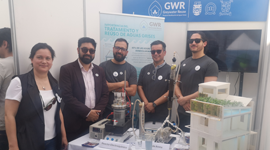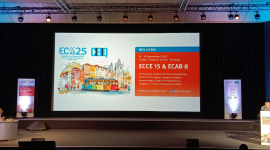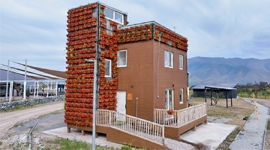You are here
"This regulation will allow us to test the potential of treated graywater".

During the inauguration of a treatment plant a few weeks ago, Minister of Housing and Urban Development Carlos Montes and Minister of the Interior Álvaro Elizalde made an important announcement: Public policy will promote the reuse of water from sinks, dishwashers, washing machines, and showers in new construction projects.
The Greywater Reuse (GWR) Project team, led by Usach, received the news with enthusiasm. They see these provisions as a boost to scientific initiatives aimed at water efficiency. Although Law No. 21,075, published in 2018, already permitted this type of project, new opportunities are emerging with the enactment of Health Ministry Decree No. 40 and Minvu Decree No. 10, according to GWR Project researchers.
According to the Ministry of Housing and Urban Development's website, the standard is mandatory for public buildings with a surface area of 5,000 m² or more and for other specific buildings, depending on their occupancy and location. Examples include hotels, shops, schools, and terminals. It should be noted that it is optional for residential buildings. However, the government is promoting its adoption through pilot projects in several regions.
Regarding this issue, Dr. Julio Romero, an Usach academic and GWR Project researcher, points out that the regulation "is undoubtedly a step forward. We are just beginning, but it facilitates the implementation of solutions that make it possible to publicize and disseminate the various alternatives for gray water treatment and reuse in high-visibility projects”.
He explains, "Given that our project has developed various alternatives for gray water treatment and reuse, this regulatory change will allow us to disseminate a range of technologies, including nature-based solutions, such as artificial or constructed wetlands, and advanced technologies, such as electrochemical treatment systems, membrane filtration and separation processes, and sorption of emerging contaminants”.
The Brazilian experiencie
The GWR Project which concludes this year, focuses on treating and reusing gray water in homes. The project will create systems to be implemented in a single-family pilot house. However, the team explains that this regulation opens the door to scaling up to larger buildings and other types of water use.
"It will undoubtedly be the beginning of action. It is key not only to define treatment systems and technologies but also to consider water reuse in order to visualize the possibilities of using treated gray water and other unconventional water sources for multiple applications, such as irrigation, toilet flushing, washing, and cooling systems. This will optimize water resource management. Artificial intelligence will also play a key role in this area, as will acceptability studies by the community", emphasizes Dr. Romero.
Thanks to their collaboration with Professor Ricardo Franci, an academic at the Federal University of Espírito Santo in Brazil and the technical director of Fluxo Engenharia Ambiental, the GWR Project learned about specific cases of gray water treatment and reuse in large buildings. As Usach emphasizes: "Visiting various types of facilities in Brazil, where we observed the implementation of nature-based gray water treatment systems, as well as biological and physical systems in residential, corporate, and industrial buildings, allowed us to realize that scaling and designing these systems for each situation is possible. It is quickly assimilated by the community and requires a change in perspective on the part of organizations and individuals”.
Finally, he states that “considering the possibilities of reusing treated water for irrigation or toilet flushing, among other applications, poses the challenge of viewing water use from an integrated perspective".
News
 GWR project at the Environmental Fair
GWR project at the Environmental Fair
 GWR researcher participates in major science conference in Portugal
GWR researcher participates in major science conference in Portugal
 The GWR Project has achieved the technological integration of gray...
The GWR Project has achieved the technological integration of gray...

